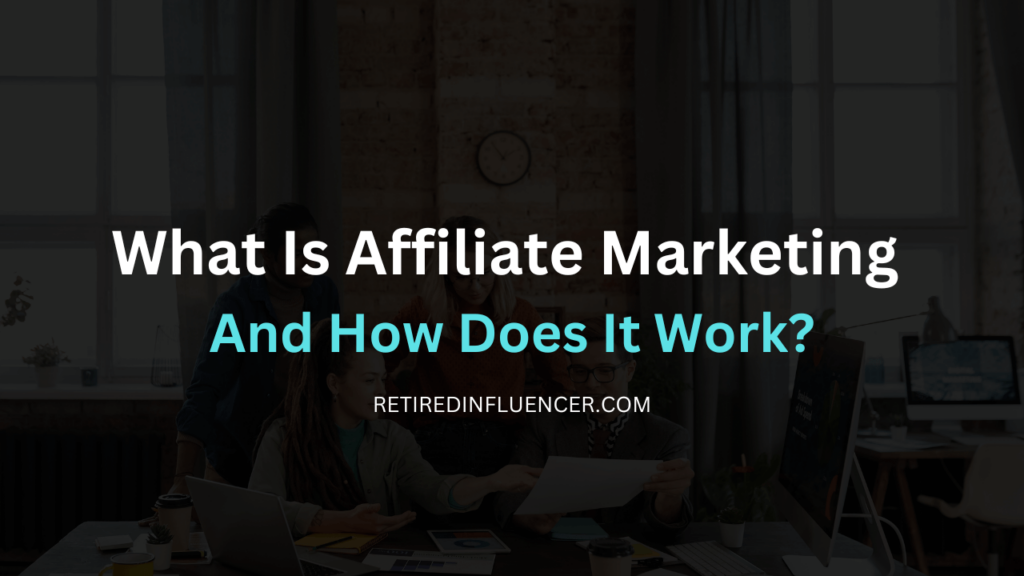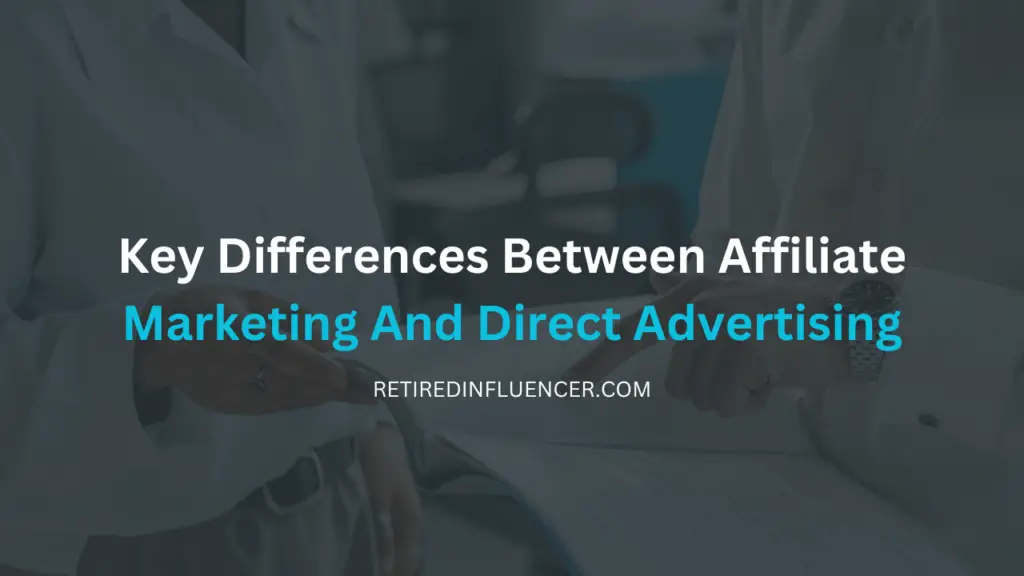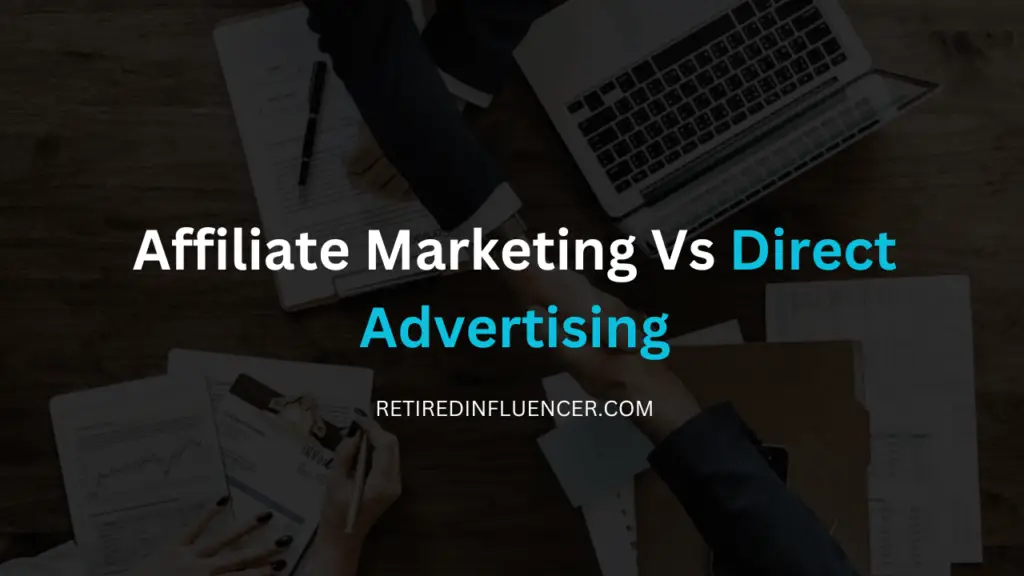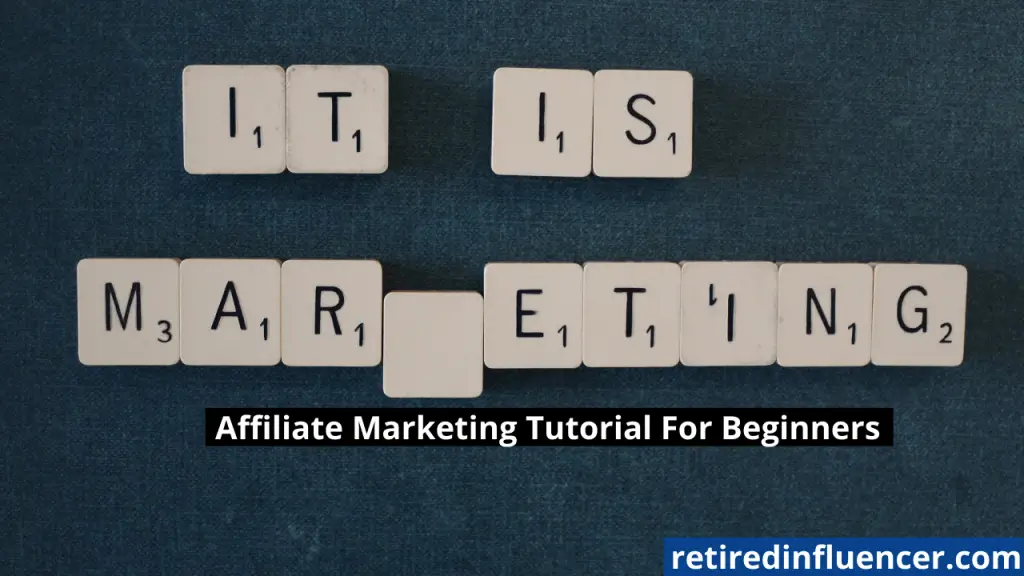When it comes to marketing, affiliate marketing, and direct advertising are two popular marketing strategies used by most businesses for promoting their products, services, company, or brand.
Affiliate marketing can be a great way to attract wider targeted audiences to your product or service, whereas direct advertising can be great for building brand awareness or recognition.
However, as both are great marketing strategies, there are a few differences between the two. Read on, let’s take a look at them.
Affiliate Marketing Vs Direct Advertising: What’s The Difference?
Affiliate Marketing is a process, marketing strategy, or tactic where an affiliate (you) promotes another company’s product or service in exchange for a commission.
Direct advertising or direct marketing, on the other hand, involves creating messages that are specifically for a group of people or audience that may be interested in your product or service.
Direct advertising is also called “traditional advertising” because it primarily consists of placing ads on other people’s websites or platforms.
Which Is Better – Affiliate Marketing Or Direct Advertising?
The choice between affiliate marketing and direct advertising which is better – depends on your specific goal and budget.
If your goal is to reach wider, targeted audiences and increase your product sales without having to spend a ton of money on advertising, affiliate marketing may be the best way to go.
However, the issue with affiliate marketing is that it takes time to see results, and mostly, success is not guaranteed.
That being said, direct advertising may be a better option if you have the budget and want to target a specific group of people or demographic and measure their effectiveness through metrics such as reach and engagement.
Direct advertising can provide immediate results and it’s easier to control than affiliate marketing.
However, it may not be as effective as affiliate marketing in the long term and it can be expensive.
Understanding The Concept Of Affiliate marketing

Definition
In a nutshell, affiliate marketing is a form of online marketing in which an affiliate (that’s you) promotes a product or service created by another individual or company in exchange for a commission.
The affiliate, also known as the publisher, promotes the product or service through an affiliate link.
And earn a commission for each sale made through their affiliate link.
That said, affiliate marketing can be done through a variety of channels such as blogs, websites, social media, forums, content marketing, or email marketing.
How To Get Started With Affiliate Marketing
To get started with affiliate marketing, you need to first decide on a niche.
Then research and sign up for affiliate programs or networks and pick a product or service that’s relevant to your niche and of good quality.
As you sign up, you’ll be provided with marketing materials such as banners, links, sale letters, and product information to use in your promotion.
As you get your hands on those marketing materials, you can begin promoting your product or service through your blog or website.
And Anytime someone (your audience or followers) makes a purchase through your unique affiliate link, you earned a commission for your effort.
- PS. I wrote another article where I went more into detail on what affiliate marketing is and how it works. Check it out!
Benefits And Drawback Of Affiliate Marketing
Benefits:
- Affiliate marketing can help business owners reach a wider audience and build strong trust and credibility with potential customers.
- Affiliate marketing can be a cost-effective marketing strategy as companies or businesses only pay affiliates for actual sales or results.
- It has the potential to make you reach when done right.
- It’s easy to start, you don’t need any technical skills or degree to start affiliate marketing.
- You can work on your affiliate business anytime, anywhere.
Drawbacks:
- There is always the risk of fraud in affiliate marketing. I mean, some affiliates may engage in fraudulent activities such as click fraud just to earn a commission.
- Success is not guaranteed.
- The affiliate marketing industry is very competitive and saturated.
Understanding The Concept Of Direct Advertising

Definition
Direct advertising which is also known as traditional marketing involves promoting a product or service directly to consumers or customers through traditional channels such as television, radio stations, billboards, online ads newspapers, magazines, print ads, etc.
How Do I Get Started With Direct Advertising?
To get started with direct advertising, you want to first identify who your ideal customers are, then create an ad campaign that appeals to those customers.
And place the ads in front of those customers using channels such as television, radio, etc.
Benefits And Drawbacks Of Direct Advertising
Benefits:
- It provides immediate value to businesses or companies
- Direct advertising can be very effective in increasing brand awareness
- It allows businesses or companies to target a specific audience and increase interest in a product or service
Drawbacks:
- Direct marketing can be expensive and difficult to control
- It may not be effective at driving conversions and sales as affiliate marketing, as the audience you’re targeting may not have a personal relationship with you or your business
Key Difference Between Affiliate Marketing And Direct Advertising

Differences In Cost Structure
One of the key differences between affiliate marketing and direct advertising is the “cost structure”.
The definition of affiliate marketing is that you promote other people’s products in exchange for a commission – typically affiliate marketing is performance-based.
This means that you (as an affiliate) only earn a commission when a sale is made through your referral or affiliate link.
This makes affiliate marketing a cost-effective marketing strategy, as companies or businesses only pay affiliates for a result.
Whereas, in direct advertising, you’ll have to pay for ad placement regardless of the results.
For example, when you want to direct advertising, you’ll have to pay for a certain number of ad impressions, clicks, or views, regardless of whether those actions result in sales.
This makes direct advertising more expensive than affiliate marketing.
Differences In Targeting And Reach
Another key difference between affiliate marketing and direct advertising is how they target and reach their ideal customers.
Affiliate marketing for instance relies on affiliates or publishers to promote a merchant’s product or service to their audience, followers, or subscribers, who may be interested in the product or service and are more likely to purchase it.
And this makes affiliate marketing less targeted than direct advertising or marketing.
In contrast, direct advertising or marketing allows companies or businesses to target a specific group of people or audiences based on demographic information, interests, and behaviors.
This makes direct advertising more effective at reaching a targeted audience and driving conversions or sales than affiliate marketing.
Differences In Conversion Rates
Another key difference between affiliate marketing and direct advertising or marketing is conversion rates.
Between the two marketing strategies, affiliate marketing is more effective at driving conversion than direct advertising…
Because affiliates or publishers often have a personal relationship with their followers or subscribers and can provide or build a high level of trust and credibility with them.
And this makes it easier for affiliates or publishers to convince their followers or subscribers to purchase their product or service.
On the other hand, direct advertising may have lower conversion rates, as the audience may not have a personal relationship with you, or the company, business, or product.
However, when it comes to increasing brand awareness and creating interest in a product or service, direct advertising can be very effective.
Can You Combine Affiliate Marketing And Directing Advertising?
Yes, you can combine affiliate marketing with directing affiliate advertising.
By combining affiliate marketing and direct advertising, you can increase the chance of reach, conversion, sales, and revenue.
Best Practices For Combining Affiliate Marketing And Direct Advertising
One of the best and most effective ways to combine these two strategies is to use direct advertising to drive traffic to an affiliate marketing landing.
You can design this landing page specifically for your affiliate program or product…
With information about the product and a clear call to action to encourage visitors to make a purchase.
That said…
Another effective way you can combine affiliate marketing and direct advertising…
Is to use direct advertising to drive brand awareness and create interest in your affiliate product or service.
And use affiliate marketing to drive conversion and build trust and relationships with potential customers.
F.A.Q
Is Affiliate Marketing Better Than Paid Ads?
The effectiveness of affiliate marketing and paid ads depends on factors such as your goal, budget, target audience, and industry. Both strategies have their pros and cons, so it’s important you evaluate which approach aligns with or best suits your business model and skills before making any choice.
However, if you have a limited budget, affiliate marketing can be a better option as you only pay affiliates a commission for a successful conversion or sales.
Paid ads, on the other hand, require upfront costs or investments such as pay-per-click (PPC) campaigns or display ads.
But paid ads can offer extension reach, as you can target a specific group of people or demographics, interest, or keywords to reach a wider audience and it also offers a quick result.
Ultimately, you can find success by combining both affiliate marketing and paid ads.
Can You Use Paid Ads For Affiliate Marketing?
Many top affiliate marketers incorporate paid advertising into their marketing strategy or campaign to reach a more targeted audience and increase or scale their affiliate business, so it’s possible to use paid ads as part of your affiliate marketing strategy.
How Paid Ads Can Be Used In Affiliate Marketing?
1). Promoting Affiliate Products
You can use paid ads to promote your affiliate products or services.
The strategy here is to create ad campaigns that drive traffic to your landing pages and from there, you want to capture the visitors’ email addresses so you can build an email list.
And when they opt-in to your email list, you can then follow up with them through email content that contains your affiliate offers.
2). Increasing Affiliate Program Awareness
If you own an affiliate program or network, or you’re an affiliate manager, you can use paid ads to increase and attract potential affiliates to your program.
You do this by running targeted ad campaigns to reach individuals who may be interested in promoting programs or becoming an affiliate of your program…
And then drive them to your affiliate program sign-up page.
3). Building An Audience
You can use paid ads to build an audience that you can later promote your affiliate products or services to.
For example, you can run paid ads to drive traffic to your affiliate website/blog or YouTube channel, where you provide useful content.
And when they land on your content, you can encourage them to follow you on social media or subscribe to your blog or channel.
And once you have an engaged audience, subscribers, or followers, you can constantly promote your affiliate offer to them (but not in a spamming way).
4). Promoting Content
You can use paid ads to promote your content that contains or includes relevant affiliate links.
For example, if you have a product review blog post or video that contains affiliate links and will earn you a good commission.
You can boost that content visibility through paid advertising or marketing to reach more targeted consumers.
This can help you reach a larger targeted audience and increase the chances of generating affiliate sales.
Is Affiliate Marketing A Paid Channel?
While affiliate marketing involves paying affiliates for their marketing efforts or for each successful sale or referral they generate, it does not operate like traditional paid advertising, rather, it operates on a performance-based basis.
In affiliate marketing, payment to affiliates is directly tied to the result they produce, meaning that affiliates or publishers are only compensated or paid when a specific action proposed by merchants is completed such as a sale or conversion is generated.
Unlike traditional paid advertising channels where you (typically, businesses) pay upfront for ad placement, clicks, or impressions, regardless of the outcomes.
What Is The Difference Between Affiliate Marketing And Direct Marketing?
Speaking of affiliate marketing, it involves promoting other people’s (company’s) products or services in exchange for a commission. Simply put – In affiliate marketing, affiliate marketers earn a commission for every successful sale they generate through their marketing efforts or affiliate links.
Affiliate marketers act as independent marketers and drive traffic and leads to the merchant’s website.
Direct marketing, on the other hand, it’s a marketing strategy that involves businesses or companies reaching out directly to potential customers to promote their products or services.
Direct marketing can be done through various channels such as word-of-mouth, direct mail, email marketing, telemarketing, etc.
Direct marketing aims to create a direct response from customers and establish a direct relationship between the business and the customer or consumer.
What Is The Difference Between Online Marketing And Direct Marketing?
The primary difference between online marketing and direct marketing is the channels that are used to target potential customers or audiences.
Online marketing, which is also known as digital marketing, refers to marketing, activities, strategies, or efforts that are performed or conducted through the Internet.
Online marketing includes a wide range of activities such as content marketing, email marketing, social media marketing, search engine optimization (SEO), etc.
Direct marketing, on the other hand, refers to a strategy where businesses or companies communicate directly with customers to promote their products or services.
Direct marketing can be conducted both online and offline.
What Is The Difference Between Direct And Indirect Marketing?
Direct marketing can be considered as a subset of indirect marketing but they differ in their approach to reaching the target audience and establishing customer relationships or brand awareness.
Direct marketing is a strategy where businesses promote or present their products or services directly to the customer. This allows businesses to establish a one-on-one relationship with the customer and tailor their marketing efforts accordingly.
Direct marketing encompasses a broader scope, including offline channels like direct mail, telemarketing, etc.
On The other hand, indirect marketing, also known as passive marketing, aims to create brand recognition or awareness and cultivate customer interest or need through non-personal communication channels.
This includes activities such as content marketing, social media engagement, and public relations.
And other forms of marketing that indirectly influence customers’ behavior to make a purchase decision.
What Is The Difference Between Affiliate Marketing And Inbound Marketing?
While both affiliate marketing and inbound marketing aim to generate sales, however, they are not the same – there are different marketing strategies that focus on different aspects of the customer journey.
Affiliate marketing is a performance-based marketing strategy that relies on external partners (affiliates or publishers) to drive traffic and conversion in exchange for a commission.
The emphasis in affiliate marketing is to drive traffic by leveraging the affiliate’s marketing efforts.
Inbound marketing, on the other hand, is a comprehensive or broader marketing strategy that focuses on attracting and engaging with potential customers through valuable information (content).
The primary goal in inbound marketing is to create and share relevant and useful content to attract ideal customers or leads.
What Is The Difference Between Direct Selling And Affiliate Marketing?
While both direct selling and affiliate marketing can be used to sell or market a product or service, however, they aren’t the same, they operate in distinct ways.
In the case of direct selling – it involves selling or marketing products or services directly to potential customers through personal interactions.
Whereas affiliate marketing involves partnering with third parties (affiliates, publishers, or influencers) to promote products or services. In this model, the business or the company pays affiliates for every sale generated through their marketing efforts.
What Is Direct Affiliate Marketing?
Direct affiliate marketing is when you just take your affiliate links from your affiliate program or network and place them in various places like social media platforms, forums, etc.
In-Summary
“Affiliate marketing and direct advertising” are two popular marketing strategies used by most companies and businesses to promote their product or services.
Both strategies involve promoting products to potential customers but there are significant differences between the two.
Understanding the differences, similarities, and pros and cons of affiliate marketing and direct advertising, can help choose one that best fits your goal, budget, and target audience.
READ ALSO!





